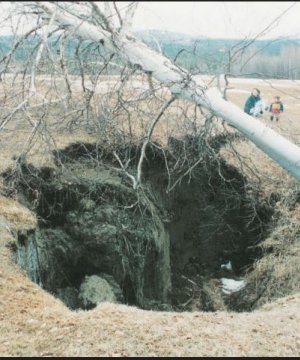Boreal Forest Silty Slopes Moist
Scenario model
Current ecosystem state
Select a state
Management practices/drivers
Select a transition or restoration pathway
-
Transition T1A
Disturbance leads to the thermal erosion of ground ice and the subsidence of soil resulting in formation of thermokarst depressions.
More details -
No transition or restoration pathway between the selected states has been described
Target ecosystem state
Select a state
Description
The reference plant community is open needleleaf forest (Viereck et al. 1992) with the dominant tree being white and black spruce. There are five plant communities in the reference state related to fire. All plant communities associated with the site have limited data, so the state-and-transition model is provisional.
Submodel
States 1, 5 and 2 (additional transitions)
1.1. Reference Stage
1.5. Pioneering fire stage
1.2. Late fire stage
Description
Thermokarst occurs due to the thermal erosion of ice-rich permafrost in soil after disturbances such as fire events or land clearing. While thermokarst can be readily observed, details related to thermokarst succession are poorly understood. After an unknown timeframe, thermokarst depressions could theoretically revert back to plant communities associated with the reference state (Myers-Smith et al. 2008). However, the timeframe for recovery is likely outside the scope of typical land management priorities. At this time, restoration back to reference conditions is not considered within the state-and-transition model.
Future data collection efforts and research would likely enhance information about existing plant community phases within this state and allow for better understanding of the potential transitions from one community phase or state to another.
Submodel
Model keys
Briefcase
Add ecological sites and Major Land Resource Areas to your briefcase by clicking on the briefcase (![]() ) icon wherever it occurs. Drag and drop items to reorder. Cookies are used to store briefcase items between browsing sessions. Because of this, the number of items that can be added to your briefcase is limited, and briefcase items added on one device and browser cannot be accessed from another device or browser. Users who do not wish to place cookies on their devices should not use the briefcase tool. Briefcase cookies serve no other purpose than described here and are deleted whenever browsing history is cleared.
) icon wherever it occurs. Drag and drop items to reorder. Cookies are used to store briefcase items between browsing sessions. Because of this, the number of items that can be added to your briefcase is limited, and briefcase items added on one device and browser cannot be accessed from another device or browser. Users who do not wish to place cookies on their devices should not use the briefcase tool. Briefcase cookies serve no other purpose than described here and are deleted whenever browsing history is cleared.
Ecological sites
Major Land Resource Areas
The Ecosystem Dynamics Interpretive Tool is an information system framework developed by the USDA-ARS Jornada Experimental Range, USDA Natural Resources Conservation Service, and New Mexico State University.

